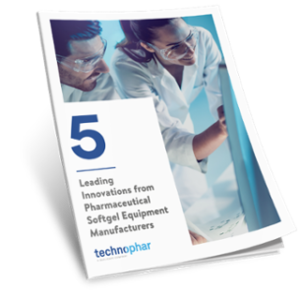
5 Leading Innovations from Pharmaceutical Softgel Equipment Manufacturers
In the pharmaceutical industry, new manufacturing technologies have never been more important. Innovative healthcare solutions are on the rise, and pharmaceutical manufacturers must be able to keep up. But how can your company stay ahead of the curve? Investing in innovative equipment is key to stay competitive and profitable.
keep up. But how can your company stay ahead of the curve? Investing in innovative equipment is key to stay competitive and profitable.
In the ever-evolving pharmaceutical industry, forward-thinking companies stand apart. Innovation is what differentiates the leading manufacturers from the followers. It’s crucial to proactively respond to development challenges in the pharmaceutical manufacturing industry.
What innovations have come from leading companies? Learn the features and cutting-edge solutions that are revolutionizing the process for pharmaceutical manufacturers.
In this whitepaper we take a look at:
- Signs your softgel machines are outdated
- Innovations from pharmaceutical manufacturers that will improve your entire encapsulation process
- Features from the latest softgel machines your facility shouldn’t be without
Download this whitepaper to learn more about leading innovations from pharmaceutical encapsulation equipment manufacturers.




